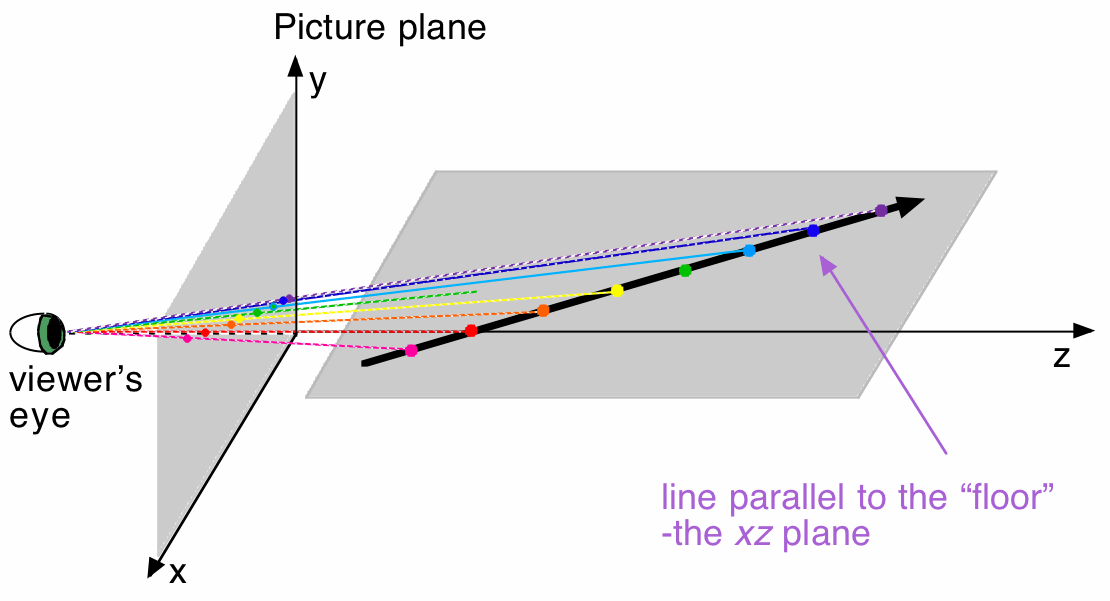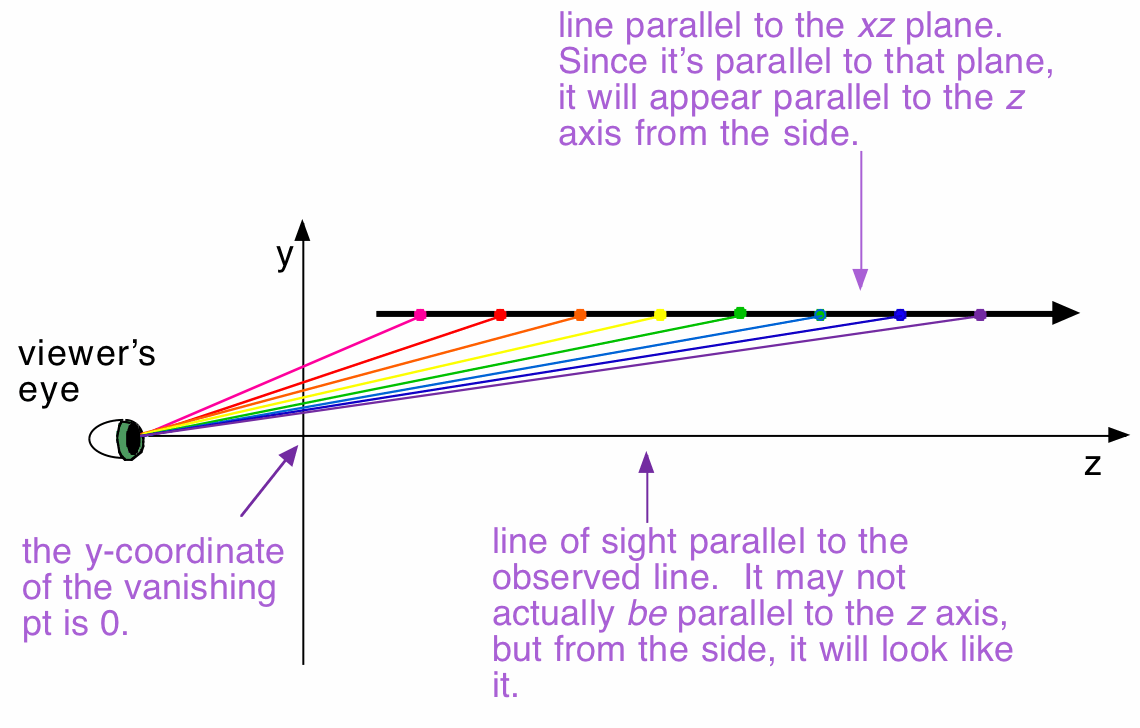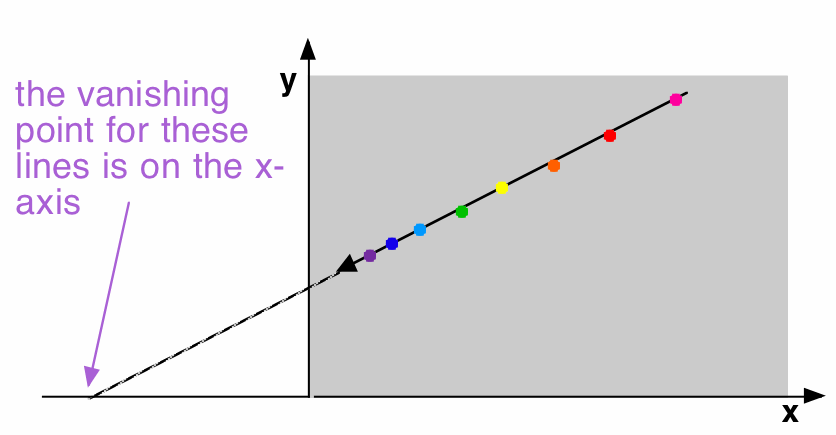Partial Side View (so you can see all three axes)

Next, let's consider a specific case of the last situation: a viewer is looking at a line parallel to the floor/xz-plane. What does the viewer see? Approaching it the same way, we see the following:


Here, we can clearly see that the farther out the viewer is looking, the closer together the y-coordinates of the perspective images of the points are getting --and the closer to y=0 they are getting.
The line will vanish where the line of sight that is parallel to the observed line crosses the y-axis, which will be when y=0.

And here, we can see that again, the farther out on the line the viewer looks, the closer together the x-coordinates of the images are getting, but this time they are not getting closer and closer to x=0.
The line will vanish where a line parallel to the observed line crosses the x-axis.
Let's again rotate around to see what the viewer sees:

The point where it vanishes is the point where a line-of-sight parallel to the actual line crosses the picture plane. Since the viewer's eye is in the xz plane, and since the actual line is "flat", such a line of sight will lie in the xz-plane, and hence will intersect the x-axis.
| The perspective images of lines parallel to the xz plane (that is, parallel to the floor) have vanishing points on the x axis. In practice, the line that plays the role of the x-axis is the horizontal line through the vanishing point for orthogonals, and we call this line the horizon line. |  |